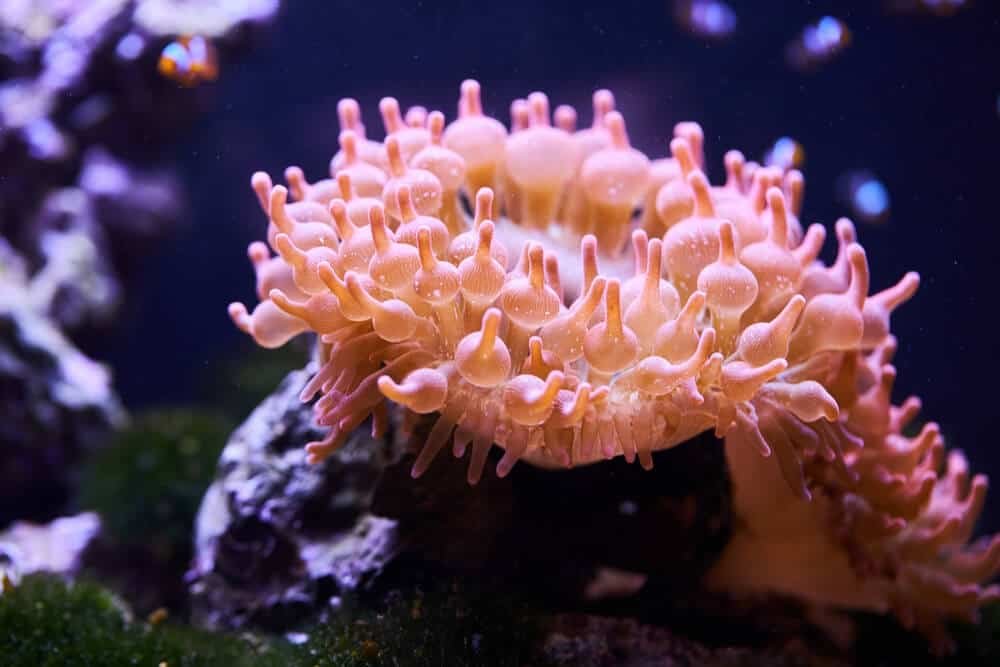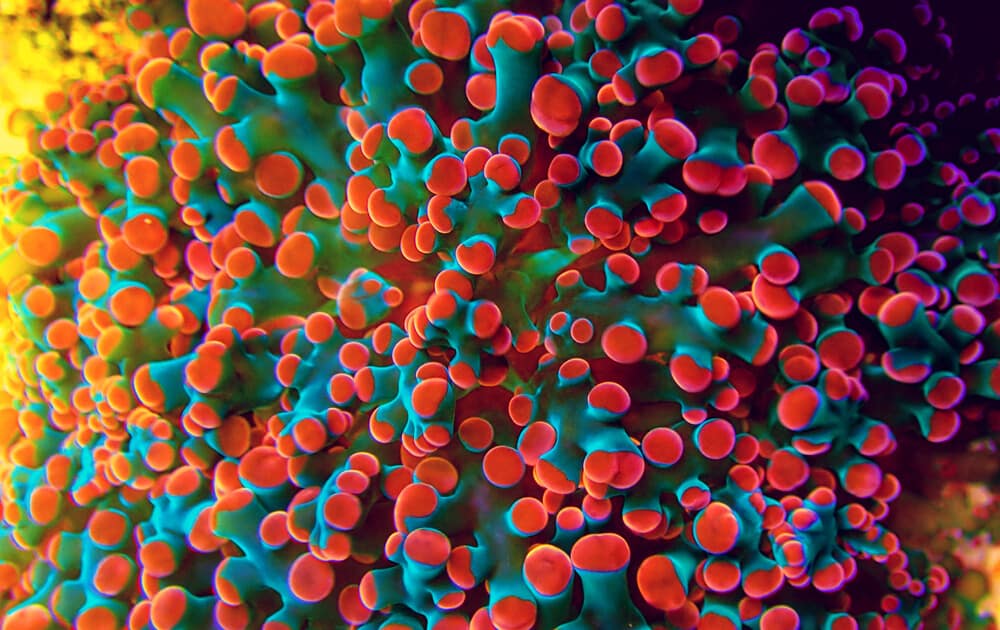How Often Do Bubble Tip Anemones Split?

Bubble tip anemones are one of the most favored types of anemones that require relatively minimal care. They come from the family Actiniidae with their origin being around the Indo-Pacific region of the Red Sea and Samoa.
How Often Do Bubble Tip Anemones Split?
Bubble tip anemones (BTA) feature gorgeous colors like tan, green, brown, and bluish-green, thereby bringing out their decorative feature.
Some hobbyists call them Bulb Tentacle Anemone, mainly due to their bulbous tips. Moreover, the survival rate of bubble tip anemones can exceed 100 years, but only if appropriate care is executed.
Another interesting fact about BTAs is that you will constantly find anemonefish around these species.
This is because they have a symbiotic relationship where the anemonefish provides security and essential nourishment while the BTA provides shelter for the anemonefish.
Anemones can split a couple of months throughout the year, with the clones resembling the original DNA in every way.
In addition, most of these species may experience splitting between August and February even though it can occur during any month of the year.
The splitting process can take up to 24 hours, therefore you may be able to observe the first few steps of the process during the day.
When you find your BTAs splitting, it is likely that they are signaling that the water parameters are not optimal for them.
Continue reading to learn more about what causes BTAs to split and how to keep these anemones in the right condition to avoid splitting.
We’ll also talk about the possibility of these creatures biting each other inside your tank. Let’s get started right away!
Why Do Bubble Tips Anemones Split?
The exact reasons why BTA split at home are still unidentified but it is believed that it can be influenced by factors like poor water conditions, insufficient feeding, or fear of danger.
For more understanding, check out the pointers below.
1. Poor Water Conditions
With the water parameters, it may be due to using too hot or too cold temperatures, poor levels of PH, the jets may be facing your anemone thereby making the water flow directly at it, and more.
2. Insufficient Feeding
How is insufficient feeding connected with the splitting of anemones, you may ask? Anemones require light since it is their common source of food.
Deep inside their tissues, they contain zooxanthellae, which aid in photosynthesis as well as provide essential nutrients and energy.
Therefore, if your BTA is not receiving enough light, the zooxanthellae may expel thereby reducing the ability to photosynthesis and making them split.
Another reason why BTAs split due to insufficient food is that, as they grow larger, they will require to feed on supplemental meals such as fresh raw shrimp, Mysis shrimp, reef frenzy, and more.
The nutrients found in these types of foods can help prevent the anemone from splitting.
3. Fear Of Danger
Sometimes, anemones can split if they fear something or sense danger. For example, BTA may be unable to adapt properly to a new tank, causing it to battle for survival and so divide to increase its survivability.
For this reason, it is recommended to keep them in a tank that has been operating with appropriate conditions for about 6 months.
4. Asexual Reproduction
Another possible reason why your anemone is splitting can be while they are multiplying through asexual reproduction. The main goal here is to clone an identical twin with the exact same characteristics.
Are There Other Methods That Anemones Use To Reproduce?
BTAs can also reproduce through sexual means by fusing eggs and sperm in the water. This is referred to as external fertilization.
Furthermore, BTAs can also multiply themselves through internal fertilization where the mouth produces the larvae then moves towards the column and later settles near the foot of its parent where it will later develop into a young BTA.
While asexual reproduction produces a clone with similar traits as the parent, the DNA will be different when it comes to sexual reproduction.
Signs That Show Your Bubble Tip Anemone Is Splitting
Different BTAs divide in different ways, but the first indication will appear once the body expands. It then proceeds to the splitting procedure, which occurs soon after the body grows larger.
Following that, it elongates and expands in all directions while attaching the majority of its basal sections to a rock. You may notice the tissue parting from the narrowest point at this moment.
More straining causes the sphincter muscle to detach, and the species to split in two. The final step is for each half to start replacing missing or damaged internal organs.
How To Maintain A Healthy Environment For Your Bubble Tip Anemone
Most anemones may die prematurely if exposed to unhealthy conditions. This is because they tend to easily experience health issues and diseases, so treating them immediately after you notice that something is off may be vital for their survival.
In most cases, a sick anemone will experience color loss, lack of appetite and activity, as well as shrunk tentacles. However, there are other signs that may not be health risky like:
1. Scarring
Scarring can normally occur after splitting, therefore you can wait a few months until the mark disappears almost completely.
2. Unsuccessful Splitting
Due to still some unidentified reasons, some anemones can start experiencing the splitting process, which later stops and the species begins regaining its original appearance. Therefore, it does not mean that your BTA may be facing health problems.
What About Copper?
In case you have fish as tank mates for your anemones, it is important not to include copper in their diet since it is poisonous to BTAs, thereby leading to their death.
Conclusion
BTAs may be very hard to care for, with only a few surviving in a reef aquarium at times. However, if you understand all of their requirements, it should be simple work for you.
Even though there is no scientific evidence to explain why bubble tip anemones divide, it is critical to provide them with conditions that match their natural home.
